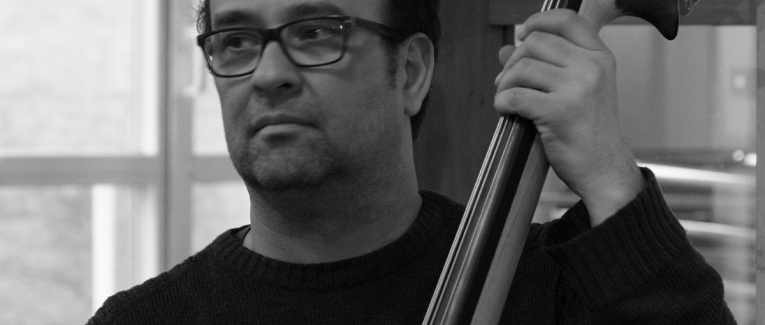
Earth in motion: Childhood at the heart of creation with Yann Bonnin – Part I
 19 min
19 min
Earth in motion: Childhood at the heart of creation with Yann Bonnin – Part I
Conversation held on June 24, 2025, in Montigny, Normandy, with Yann Bonnin: writer-director, animator, and head of animation for the Green Tales project. Published in three parts.
Interview conducted by Imane Tamli, multilingual writer and creative contributor at Panodyssey.
Green Tales is a European educational project that gives children a new way to talk about the environment, not through big speeches, but with their hands, their drawings, and their ideas. Through stop-motion short films and creative slideshows, they explore the four elements of nature: water, air, fire, and earth. Each child tells the story of the world as they feel it, in their own unique voice.
Since the very beginning, Yann Bonnin has been part of these workshops. He’s an artist and filmmaker specializing in animation, and above all, someone passionate about sharing his craft. In this conversation, he reflects on his journey, what he’s learned from working with kids, and how it’s reshaped the way he creates.
 Composite image from the series: The Shadoks and the Big Blank – Directed by Jacques Rouxel and Laurent Bounoure. Produced by: AAA Productions, Canal+, INA – © 1999, All rights reserved.
Composite image from the series: The Shadoks and the Big Blank – Directed by Jacques Rouxel and Laurent Bounoure. Produced by: AAA Productions, Canal+, INA – © 1999, All rights reserved.
Can you introduce yourself in a few words? Who are you and what do you do?
My name is Yann Bonnin. I was born in Tours, in the heart of the Loire Valley, but my Breton roots (Tregor) are a big part of who I am.
At 21, I left my hometown for Paris, driven by an ambition I couldn’t quite define at the time, except that I knew I wanted to make animated films. This was back in 1987, when computer-assisted animation was just beginning to emerge.
I started out at a pioneering animation studio, one of the very first to experiment with what we then called literally “Animation Drawing Assisted by Computer ,” or ADAC (DAAO in french). We weren’t yet using terms like “CG animation.” The creative process still began the traditional way, drawing on paper, but from there, everything changed. No more cels, no gouache, no rostrum camera. The final image was composed digitally. It was a true revolution, thanks to a piece of software developed by a man I always make a point to mention: Claude Huardeaux. He was a brilliant mind and one of the people who helped shape modern animation.
And here I’ll pause to say, this kind of ingenuity has always deeply inspired me. I have so much admiration and unwavering loyalty for those who dare to invent, to explore, to move things forward. Two names come to mind instantly: Albert Einstein and Marie Curie. I adore them both. My list is long, though. Too many brilliant people get forgotten, their work taken by opportunists more interested in credit than contribution. So thank you for letting me name a few. It's something I see as both a privilege and a duty.
Anyway, back to the story. My very first attempts at filmmaking were with a Super 8 camera, capturing drawings and toy cars frame by frame. So, at Label 35, that mix of traditional, analog, and digital processes, that’s what hooked me for good. I owe a lot to Virginie Jallot, too. I showed up at her studio one day with a sketchbook and a cardboard box full of my first animation tests. She asked me, “So what do you want to do with all this?” I answered honestly, “I’m not quite sure yet, that’s why I’m here.” She looked a bit surprised, and I asked, “Is this not the right place for that?” That’s when she understood it wasn’t just a passing whim, it was something I was determined to pursue, one way or another. She agreed to let me take the test and start learning the software. A real fairy godmother.
Since then, I’ve never left the world of animated images and digital creation. I’ve had the chance to work with people like Jacques Rouxel, the creator of The Shadoks , and Jean Giraud (aka Moebius), among many others, some well-known, some completely unknown, but all deeply meaningful to me. I call them my fairies or my ghosts, and they live in my imagination and are always with me.
Over the years, I’ve worked on everything from cult animation series like The Shadoks, to documentaries, experimental films, corporate work, and educational content. And now, at 59, I’ve realized that what excites me most is transmission, sharing my experience and skills with the next generation through educational projects like Green Tales. What a gift!
Well, I'm not starting from scratch either. Before that, I taught in higher education: 10 years as a specialist teacher at Gobelins, then 3 years almost at Atelier de Sèvres (but interrupted by COVID), and before that, 3 years also at ESRA, Cifap, and above all at INA (French National Institute of Audiovisual).
On a more amateur level, I was in charge of an animation workshop (computer graphics, then stop-motion) for Paris-Ateliers for 18 years (enlightened amateurism and preparation for animation schools).
In Belgium, I've been a trainer in Liège (PIL-Technifutur), Brussels (ESRA, Zorobabel) and Luxembourg (Lycée Technique des Arts et Métiers). On the amateur and educational side, I ran workshops for children with Zorobabel during the ANima festival. And I myself continue to take part in one-off or year-round workshops to keep experimenting and out of a desire to share this with other people.
What has your journey been like so far? How did you become an artist or creator?
I grew up in a modest, working-class family, but it was a safe and loving environment. From an early age, I’ve always seen the world through a slightly different lens. At the time, no one really paid attention to it, but years later, as an adult, I was diagnosed with ADHD. That diagnosis helped me make sense of a lot of things in hindsight.
As a child, drawing, tinkering, or any kind of creative activity was my personal refuge, what I like to call my mental hideout. I might have been physically present, but my mind was off somewhere else, dreaming up wild, imaginative worlds. My parents were often baffled, though not particularly worried. They just couldn’t figure out where all those “weird” ideas were coming from. Why I was always so obsessed with understanding how things worked, always building, taking things apart, sketching… I never stopped.
I still remember how discovering reading in school felt like a revelation. First, Apoutsiak, the Little Snowflake by Paul-Émile Victor, then the The Three Robbers by Tomi Ungerer. Then there were the comics with Asterix, Tintin, Bibi Fricotin, Pif Gadget, and later the “real” books with Jules Verne, Dino Buzzati, Ray Bradbury, Raymond Queneau, John Steinbeck… It was like my little hideout kept expanding. And just like a snail, I carried it with me wherever I went. That’s still how I function today, my curiosity feeds my imagination, and artistic expression has always been a natural part of my life. So it’s no surprise that it eventually became my career.
Einstein, who like me was agnostic, once said something I love: “Chance is God walking around incognito.” Brilliant, isn’t it?
As a teenager, my first true love was music. I started taking classical guitar lessons at a community center. I enjoyed it, but I had a strong itch to play electric guitar, heavily inspired by pop-rock, jazz, and especially blues. My older sisters and their mates were the ones who really shaped my musical tastes. Thanks to them, I discovered a whole world of bands and artists. The list is endless. But if I had to pick one album to take to a desert island, it would definitely be Abbey Road by The Beatles. I’ve been a fan since I was a kid. One of my dreams is to meet Paul McCartney or Ringo Starr, or both, ideally!
I still remember hearing Come Together for the first time. It hit me like lightning. That song is permanently etched into my brain, it was the spark that made me want to learn music.
It all started out casually, just jamming with friends from the neighborhood. We’d hold impromptu sessions on park benches, and later we moved into basements to rehearse. At the time, there were no tutorials, no online platforms, you had to listen, copy, experiment.
We’d scratch up our vinyls from dropping the needle over the same spot again and again. It got expensive! So our trick was to record the same section of a song several times onto a audio tape, then loop it, singing the melody over and over to memorize it. After that, we’d go hunting for the notes on our guitars, just relying on our ears.
That process, fully intuitive and filled with trial and error, shaped me in a profound way. Your brain stores not only the sound, but also the physical path your fingers take to recreate it. They become inseparable. And often, in searching for one thing, you stumble onto something else you weren’t even trying to find. That’s where the magic is. That’s why musical exploration is so powerful. Those moments of discovery, they’re truly euphoric and unforgettable.
You don’t get that from buying tabs or sheet music. First, you’d need to know how to read them. Even with online videos today, it’s just… not the same.
Of course, like many others, I also had a deep love for comics and books, I’ve already mentioned that. But here’s a little anecdote: I used to spend hours flipping through the family’s old Petit Larousse illustré, that classic French dictionary. I’d jump from one word to another like I was traveling the world. I still have that exact book, I was the youngest of three and the last to go through school, so it stayed with me. I also spent loads of time in the local library. That was my own little Aladdin’s cave.
Anyway! After music and a short stint with free radio, I moved to Paris at the end of ’87 to try my luck in animation. My old mate Wilfrid Devaux, with whom I later made music, had told me about this studio where he was already working on a show called Sharky & George. The studio was called Label 35, named after the animation software they used.
Just to give you an idea of how things worked back then, or as we say in Brussels, to explain a bit of the bazaar, the production pipeline was what I’d call a joyful kind of improvisation. We started with traditional hand-drawn animation on paper, nothing revolutionary there. But then came the twist: the computer. And that’s when the magic started.
The capture, or digitisation of paper drawings was done on a graphics device. It was like a kind of tablet equipped with a cursor or stylus, but very rudimentary. You didn't really draw with it. You reproduced by clicking lots of times to generate lines and curves called splines. The same principle applied to the set and backgrounds. In short, after all that, there was the compositing phase. We stacked the layers of animation, synchronized them, added camera movements or reframing when needed. The final output stage also involved a computer: each layer of the image appeared on a monitor, frame by frame, and was filmed by a 35mm camera, one frame at a time.
So in the end, we went back to traditional film for the final edit and sound, which was recorded on optical support. Once the master was ready, it was sent through a telecine process to be converted into analog video for TV broadcast.
It was a long process, but at the time, this was cutting-edge.
To sum it up: while the animation was still done traditionally on paper, the coloring and final image composition were handled digitally. No more tedious manual rework, where one small change could mean starting over. Now, with the computer, you could easily swap out a color, replace a background, and re-export. Plus, you could archive your work and reuse approved animations later. Shooting was fully automated. Sure, we still had to deal with labs and film reels, but even so… it was a revolution. That, precisely, is what made me fall in love with this hybrid of traditional, analog, and digital techniques. It was exhilarating.
And since I could only work at the animation studio occasionally, priority was given to more experienced artists, I used that time to train in desktop publishing. I already had a knack for computers, so that opened new doors: I started doing gigs in corporate agencies, design studios, and research offices that needed layout and graphic work. I worked freelance, bouncing between projects, but I always kept one ear to the ground, waiting for the next chance to return to animation. That was always the goal in the background.

Back in ’92, through a flatmate who was a filmmaker and had won the grand prize for short films at Avoriaz and several other awards including one from the INA, that's how I ended up there. He wasn't interested in the CG animation (DAAO), but I was. So, in return for helping him out several times with his short films and other jobs, he passed me on the tip.
The prizes was a training course on Toonbox, their in-house animation software. If you passed the initial aptitude test, you'd get access to a more intensive program that could lead to a year and a half working on a sitcom-style animated series.
At the time, they were mainly looking for candidates who, preferably, had experience with computer graphics. I gave it a shot, passed the test… and I was in. The training and production were fantastic. I made some amazing friends, many of whom I’m still close with today. Nothing to do with Facebook! 😀
By the end of the production, I was hooked. I knew this was what I wanted to do. I asked if I could use the studio to create a demo reel, and also do some freelance work when the space was available. That opened the door to regular freelance gigs with INA. They’d call me in for animated sequences on documentaries, title sequences, infographics, jingles, music videos, you name it.
Then, one day, I got really lucky.
Claude Longérinas, the head of research production, walked over and asked:
"Yann, would you be available between this date and that date?"
I said, "Yes, probably. What’s the project?"
She smiled and said, "You know Les Shadoks, right?"
Of course I knew Les Shadoks ! I loved them.
"Well, Jacques Rouxel and his company AAA are producing a commercial using Toonbox. Want to be part of it?"
I honestly thought I was dreaming. Obviously, I said yes, and that moment changed everything.
That collaboration left a deep mark on me and really launched a new chapter in my career. I ended up working with him again, including in late 1998 on the very last season of Les Shadoks, which aired in 2000. We went on to do several other projects together, all unique, and shaped by Rouxel’s singular vision. Over time, we grew very close.
When he passed away in 2024, it hit me hard. That’s also around the time I decided to move to Brussels, for personal and sentimental reasons.
2001 – First Assistant Director on “Les Conseils du Professeur Chimico”
A co-directed film by Daniel Tardy and Jacques Rouxel, produced for the INRS (French National Institute for Risk and Safety).
At the time, Jacques’ health had significantly declined, and he eventually entrusted me with completing what would become his final film.
I ended up working across every stage of the project—from storyboard to final post-production.
Production: AAA and Procitel, for the INRS. Photo credit © Yann Bonnin – 2001
It was at Zorobabel that I truly discovered the world of stop-motion animation. The studio was a joyful creative lab where just about anything was fair game: clay, cut-out paper, sand, mashed potatoes, noodles, ground coffee or not… You name it. Creativity thrived within the constraints, but there were hardly any limits. Whenever I had free time, I’d head over to contribute however I could—writing, storyboarding, animatics, puppet-making, set design, rigging, animating… and of course, compositing, editing, and final post-production, which were already part of my usual professional work. Thanks to that, I had the chance to work on both auteur films and collaborative projects that ended up being selected and even awarded at major festivals like Anima and Annecy.
No-Go Zone – directed by the Zorobabel Collective Workshop © 2015, produced by Zorobabel
Selected in over 70 festivals, winner of 8 awards, and streamed freely for 1,000 days on Arte.tv
To explore the other parts of this conversation, head over to the Creative Room Green Tales.
Curious to learn more about this European project? Check out the official Green Tales website.
And don’t miss the article: Creative Escape in the Pays de Caux 🍏 Part I and Part II.
And since Yann is also a musician, he shared this track where he plays the guitar part: "Mystery Train" (with Wilfrid Devaux).

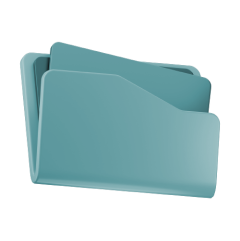







 English
English
 Français
Français
 Deutsch
Deutsch
 Italiano
Italiano
 Español
Español



 Colaborar
Colaborar


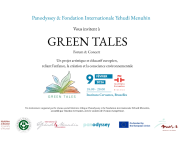
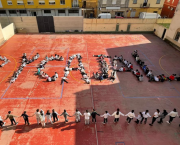
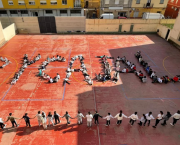
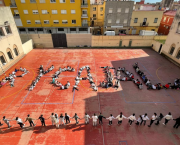
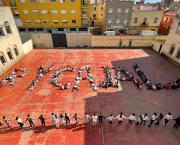
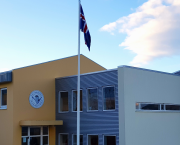

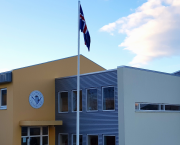

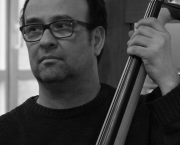
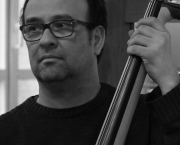

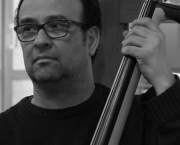
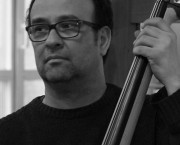
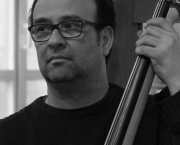




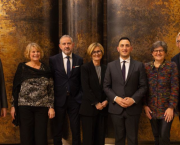
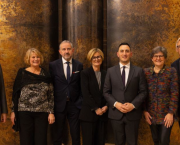
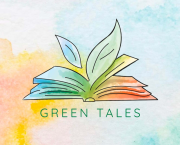
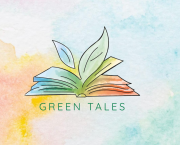
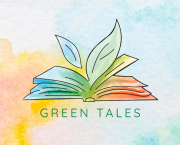
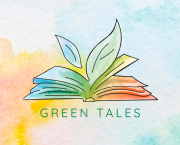
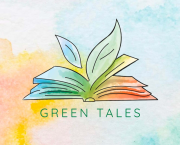
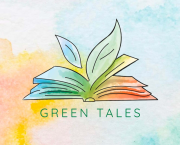



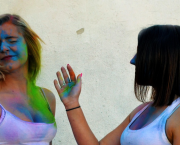



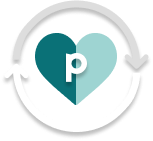 Puedes apoyar a tus escritores favoritos
Puedes apoyar a tus escritores favoritos





